Assessing Canola Stands in Fall
The optimum plant stand is 202,000 to 344,000 plants/ac or 50 to 85 plants/m2 (5 to 8 plants/ft2). Canola can yield well across a wide range of populations; a stand of 55 plants/m2 has the same yield potential as a stand of 215/m2 (20 plants/ft2). However, populations of winter canola are lower than what is recommended for spring canola because there is an increased risk of winterkill in thickly seeded winter canola. With a population of 50 to 85 plants/m2 (5 to 8 plants/ft2) loss of some plants to winterkill may not negatively affect yield. To evaluate the effectiveness of planting, check the field population about 3 weeks after planting.
To estimate the population of canola seeded on 19 cm (7.5 in.) row spacings, a square frame with a known area can be placed on the ground and plants counted within the frame. If the canola is seeded on 38 cm (15 in.) spacings, count plants along 5.31 m (17 ft 5 in.) of row within 2 neighbouring rows and multiply by 1000 to determine plants/ac. See scouting chapter XXXXXX.
If it is determined that the population is inadequate before winter, there may not be enough time to reseed the crop. Plants emerging at the end of September or into October may not grow large enough to survive winter, so seeding or reseeding at this time is not recommended. A stand of 20–40 healthy plants/m2 (2–4 plants/ft2) can produce a viable crop yielding about 90% of an optimum stand. If this is the population in fall it is advisable to consider alternate plans for spring, but to carefully check the plant population and health again in spring.
As the temperature drops in fall and early winter the canola may turn purple, especially in areas of the field with excess moisture (Figure 1). Purple tissue is a sign of stress, but purple tissue is often observed in winter canola during cold conditions and is not a clear indication that the canola is unhealthy.
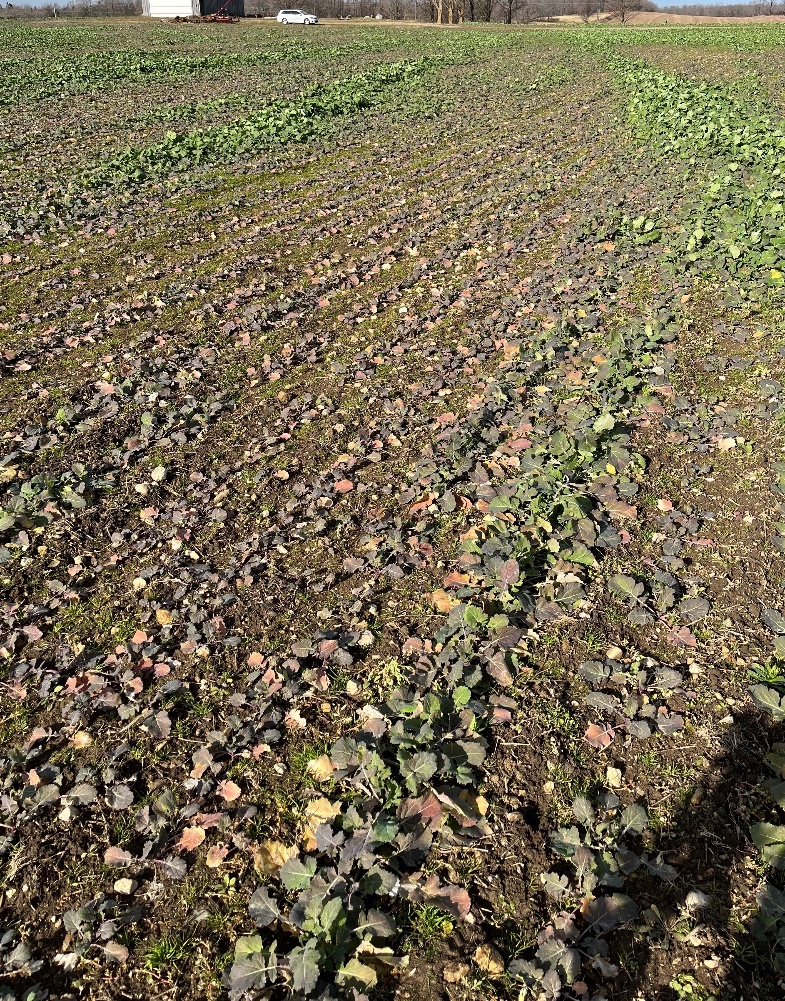
Figure 1. Canola between the tile runs has turned purple in mid-November.
Assessing Plant Health in Spring
It is important to carefully assess the health of the plants in spring. Regardless of the population, plants may have sustained winter injury and the crop may not be worth keeping. A crop that is green and growing may look healthy from a distance but could be rotten within the stem and crown or may have exposed roots caused by heaving. A crop that is discoloured or has rotten leaf tissue may have a healthy crown and have high yield potential.
Canola will grow at temperatures above 5°C. Observe the crop as conditions warm in early spring but decisions about the crop should wait until new leaf tissue develops. Confirmation of plant health should be made before fertilizer is applied. Although the top growth of plants may be entirely green in the spring, it is also normal for top growth to be purple or brown or for all the leaves to be gone. Leaf colour alone is not a good indication of plant health status. Plants must have green tissue at the growing point in the center of the rosette. If the very center of the rosette is not green and is not producing new leaf tissue during the first week of 10°C temperatures, then the plants may be dead or dying.
Purple leaves indicate stress, such as temperature stress or excess moisture, but purple leaves are not a good indication that the crop is unhealthy or will not grow normally. Purple tissue can be a sign of nutrient deficiency but its appearance in early spring is likely caused by environmental conditions. Look for a bright green growing point at the center of the rosette. It is common for healthy plants to have purple leaves and bright green growing point in early spring (Figure 2). Growing points of dead and dying plants are brown or purple and turn a deeper purple over time. Dead and dying plants are easily pulled away from the soil.

Figure 2. In early March a large plant with purple and brown leaves but a green growing point at the center of the rosette is considered healthy.
Leaves may be rotten or completely gone from the plant in early spring, or may be brown, but this is not necessarily a sign of low yield potential. If the growing point at the center of the rosette is bright green and new leaf tissue is forming, the plant should grow normally (Figure 3). Leaves often rot off plants that were very large prior to winter. There may be a cabbage odour associated with rotten leaves, but if the canola is otherwise healthy the odour should be mild. Lack of leaf tissue in spring may cause the plant to re-grow slowly at first, but in Ontario it has been frequently observed that large plants lose their leaves through winter but have large roots and high yield potential.

Figure 3. A plant with no leaves in mid-March, but it has a large, healthy root and new, green growth.
Plants with green leaves and green growing points will grow rapidly in warm weather. In early spring a green field of canola must be scouted carefully to confirm plants are healthy. Cut plants off at the soil surface to check for necrotic tissue inside the stem and crown (Figure 4). Alternatively, dig plants up and cut plants lengthwise through the crown and taproot (Figure 5). Tissue inside stems and crowns should be green or white (Figure 6). If there is brown, necrotic tissue inside the stem the canola will have lower yield potential. This is referred to as winter injury. When canola bolts the stems are hollow, and crowns of small plants may have a small hollow area prior to bolting, but large hollow cavities in crowns in early spring may be an indication of low yield potential, especially if there is brown tissue. It can be difficult to assess the health of crown tissue on very small plants. If some injury is observed but the preference is to keep the canola the nitrogen rate can be reduced by 25% to align with yield potential.
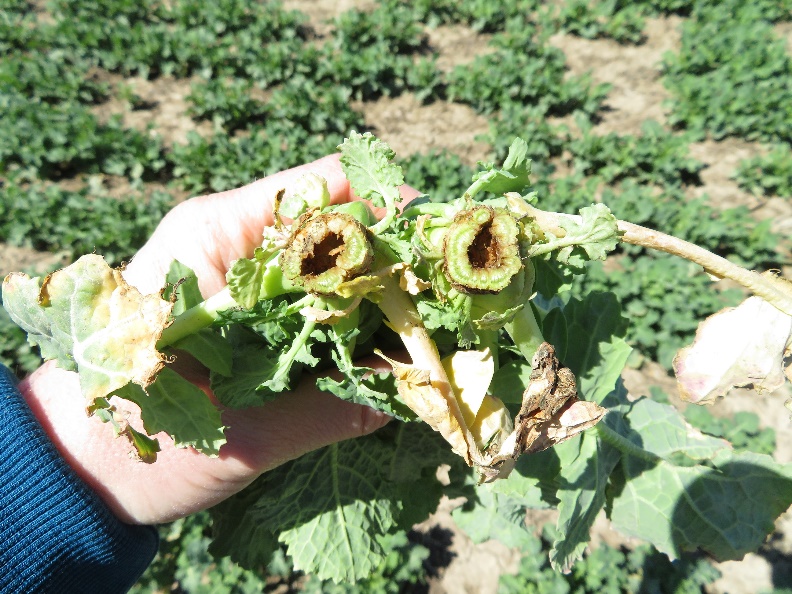
Figure 4. Although plants are green and growing this canola should be terminated because it has brown, necrotic tissue inside the crown indicating low yield potential.

Figure 5. Taproots cut lengthwise revealing brown, necrotic tissue.
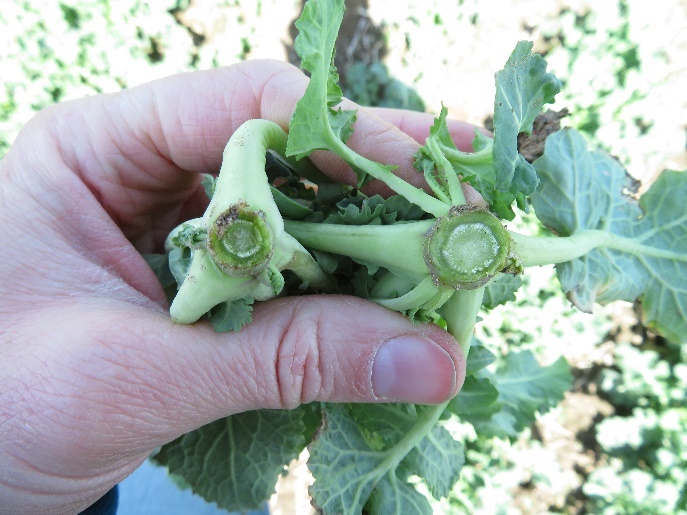
Figure 6. Tissue inside healthy plant crowns is green or white.
Plants may have green leaves and growing points but may be heaved out of the soil and have exposed roots. Significant heaving, where taproots are fully ejected from the soil (Figure 7), will result in plant death or very low yields. The most difficult plant health assessments are often when plant tissues look healthy, but plants are small and are partially heaved out of the soil (Figure 7). In this scenario there is often some winter injury as described in the paragraph above. If there are exposed roots yield potential will be lowered (Figure 9). Heaving may be attributed to a compacted layer of soil below the taproots, or to shallow root systems which result from excess moisture during seedling stages. Heavier soils are prone to heaving.

Figure 7. Canola plants completely heaved out of the soil in spring.
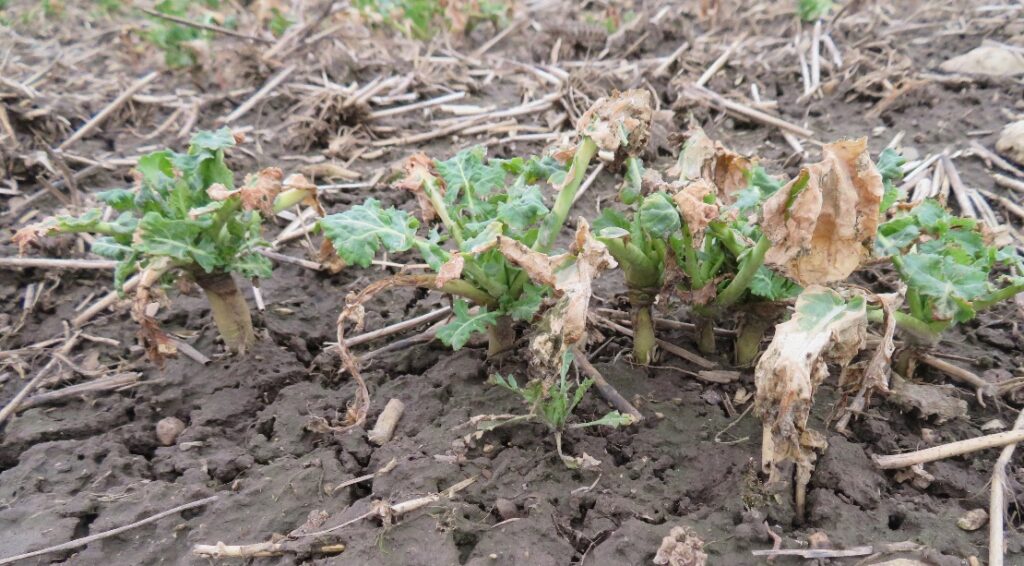
Figure 8. Small plants that are partially heaved present a difficult decision and may be low yielding.
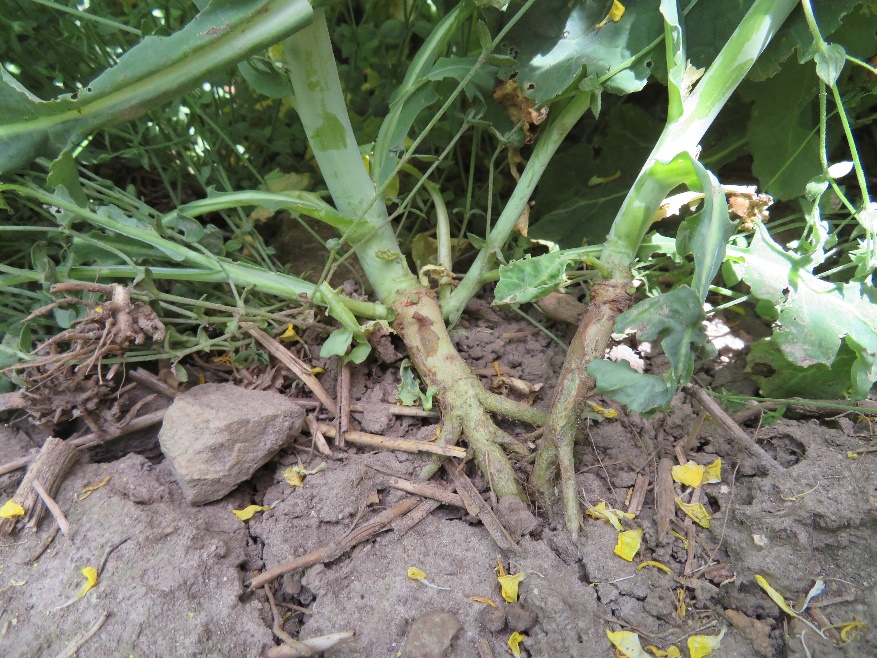
Figure 9. Canola with exposed roots that was highly variable and low yielding.
Canola often has some odour, but a very strong rotten cabbage smell is a good indication there are dead and dying plants in the field. Odour is commonly observed in fields where excess moisture is affecting plant health. Canola may not survive in areas of the field where there is standing water. If there are rotting plants a strong odour will usually be noted as soon as you step out of your vehicle at the field edge. Plants that are dying typically have a purple growing point that turns a darker over time and are easily pulled away from the soil. When an odour is noted, dig up plants to check for rotten root tips. If the plant is alive and has a green growing point but has a rotten root tip it may have lower yield potential.
Assessing Plant Populations in Spring
The optimum plant stand is 202,000 to 344,000 plants/ac or 50 to 85 plants/m2 (5 to 8 plants/ft2), but a stand of 20–40 healthy plants/m2 (2–4 plants/ft2) can produce a viable crop yielding about 90% of an optimum stand. Generally, healthy canola plants in thin stands will branch out aggressively to compensate, resulting in no significant yield loss. Uniformly thin stands will perform better than uneven stands. Thin stands may have a longer flowering period and mature later. In thin stands canola plants will have thick stalks which may pose some challenges at harvest time. When moisture is limited, low density stands may not be able produce adequate yields. Populations of greater than 85 plants/m2 (8 plants/ft2) may be at a higher risk of white mould and lodging, but if the plants do not have winter injury, then there are no additional concerns with a high population.
Gaps are common in winter canola fields. Areas without plants may be caused by issues with emergence, slugs, standing water or winterkill and may appear before or after winter. A field with gaps can produce high yields and may be worth keeping if the remaining plants are healthy and gaps account for a low percentage of the field area.
To decide whether to keep a winter canola crop, assess the plant health and determine the population of healthy plants. Consider the uniformity of the stand and percent of field with a population less than 20–40 healthy plants/m2 (2–4 plants/ft2). Do not overseed or fill gaps with spring or winter canola as it will not mature at the same time as the existing crop. If the field is going to be terminated with herbicides it should be done before the canola enters reproductive stages, at which point it will become harder to control.